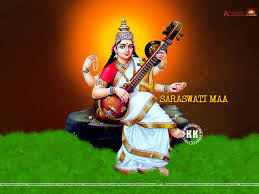Veadantasara-16:
151. Samanadhikaranya is the relationship between two words having the same locus. For instance, in the sentence, “This is that Devadatta”, the word “That” signifying Devadatta associated with the past, and the word “This” signifying Devadatta associated with the present, both refer to one and the same person called Devadatta. Similarly in the sentence, “Thou art That”, the word “That” signifying Consciousness characterized by remoteness etc., and the word “Thou” signifying Consciousness characterized by immediacy etc., both refer to one and the same Consciousness, viz., Brahman.
152. The second relation, that of Visesana-visesya-bhava is this: In the same sentence (“This is that Devadatta”), the meaning of the word “That” is Devadatta existing in the past and the meaning of the word “This” is Devadatta existing in the present. They are contrary ideas, but still they qualify each other so as to signify a common object. Similarly in the sentence, “Thou art That”, the meaning of the word “That” is Consciousness characterized by remoteness etc., and the meaning of the word “Thou” is Consciousness characterized by immediacy etc., They are contrary ideas but still they qualify each other so as to signify a common object.
153. The third relation, that of Laksyalaksanabhava is this: In that very sentence (“This is that Devadatta”), the words “This” and “That” or their meanings, by the elimination of contrary associations of past and present time, stand in the relation of implier and implied with Devadatta who is common to both. Similarly in this sentence (“Thou art That”) also, the words “That” and “Thou”, or their meanings, by the elimination of contrary associations of remoteness and immediacy etc., stand in the relation of implier and implied with Consciousness which is common to both.
154. This is also called Bhagalaksana.
155. The literal meaning in the manner of the sentence, “The blue Lotus” does not fit in with the sentence: “Thou art That”.
156. In the phrase (“The blue lotus”), the meaning of the word “blue” is the blue colour, and the meaning of the word “lotus” is the flower called lotus. They respectively exclude other colours such as white etc., and other objects such as cloth etc., Thus these two words mutually stand in the relation of qualifier and qualified. And this relation means their mutual qualification or their unity. This interpretation of the sentence, since it does not contradict any other means of knowledge, is admissible.
157. But in this sentence (“Thou art That”), the meaning of the word “That” is Consciousness associated with remoteness etc., and the meaning of the word “Thou” is Consciousness associated with immediacy etc., If it is maintained that these two ideas, since they eliminate their mutual distinction stand to each other in the relation of qualifier and qualified, meaning their mutual qualification or their unity, it involves a contradiction with direct perception and other means of knowledge, and therefore is inconsistent.
158. Therefore it has been said: “In this sentence (“Thou art That”), the correct meaning is neither the union of the two ideas nor their mutual qualification. The real meaning of the sentence, according to scholars, is an absolute homogeneous principle.” (Panchadasi VII-75).
159. Again in the sentence (“Thou art That”), Jahallakshana is not also admissible as in the sentence, “The cowherd village is on (literally in) the Ganga.”
160. In that sentence, as it is altogether absurd to construe the words, “Ganga” and “cowherd-village”, literally, in the sense of container and contained respectively, that meaning of the sentence must be entirely abandoned, and it should refer by implication to the bank of the Ganga. Hence in this case the application of Jahallakshana is admissible.
Continues..



.jpg)
Comments